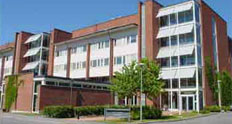Lars Olson, Ph.D.

Olson Laboratory
Research Focus
Our group studies development, growth factors, inhibitory factors, regeneration, transplantation in the central nervous system, the dopamine system, models for Parkinson's disease and its treatment, models for spinal cord injury and treatment strategies, the roles of transcription factors in the nervous system and genetic risk factors for Parkinson's disease and schizophrenia. Research has been taken all the way from animal studies to clinical trials.
Our current focus is: (1) Spinal cord injury and the development of post-injury protection and repair strategies: we have recently shown how a class of cancer medicines may protect the injured spinal cord; (2) The role of the Nogo nerve growth inhibitory system in CNS plasticity, memory, aging and repair: we have recent data to suggest a key role for the Nogo receptor in the formation of life-long memories; (3) Genetics and modeling of Parkinson's disease with one focus on the role of mitochondrial dysfunction in the brain: we carry out case-control studies in large materials, locate transcriptional activity of implicated genes and have recently developed a genetic mouse model that develop slow progressive PD-like pathology and symptoms; (4) Schizophrenia: the role of cortical cholinergic dysfunction in schizophrenia is beeing addressed; (5) MRI development: we use fMRI and MR spectroscopy to map functional and chemical changes in the rodent brain in vivo; (6) Aging: we analyze the brain phenotype of a novel genetic model of aging.
Selected Publications
Allodynia limits the usefulness of intraspinal neural stem cell grafts; directed differentiation improves outcome.
Nature Neuroscience 8: 346-353, 2005
LRRK2 expression linked to dopamine-innervated areas.
Annals of Neurology 59: 714-719, 2006
Cortical cholinergic deficiency enhances amphetamine-induced dopamine release in the accumbens but not striatum.
Experimental Neurolology 208: 73-79, 2007
Progressive parkinsonism in mice with respiratory-chain-deficient dopamine neurons.
Proceedings of the National Academy of Science U.S.A. 104: 1325-1330, 2007
Inhibiting epidermal growth factor receptor improves structural, locomotor, sensory, and bladder recovery from experimental spinal cord injury.
Journal of Neuroscience 27: 6428-6435, 2007
Cortical sensory map rearrangement after spinal cord injury: fMRI responses linked to Nogo signalling.
Brain 130: 2951-2961, 2007
Karolinska Institutet
Retzius väg 8
S-17177 Stockholm, Sweden

